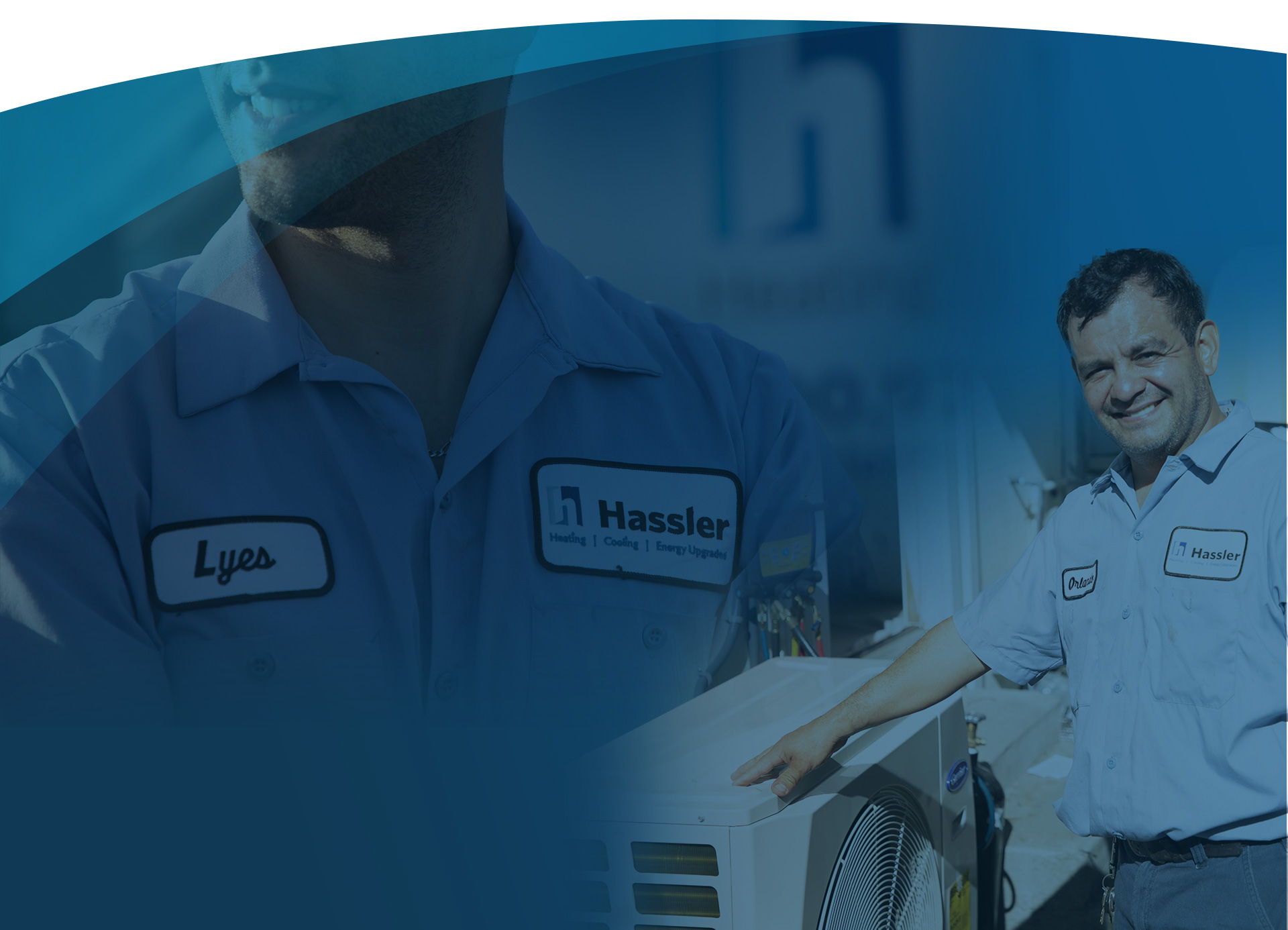
Federal & Local Tax Credits
As a part of The Hassler Difference, we strive to exceed expectations and build lasting relationships with our customers in Marin, Contra Costa, and Alameda counties. This is why we stay up-to-date on the available incentives in the area to make our heating, cooling, and energy efficiency upgrades more affordable.
There are several ways to save on upgrading your home, and tax credits are currently some of the most substantial, thanks to the Inflation Reduction Act (IRA). Our team can guide you through the tax credit process so your investment will pay off in the least amount of time possible.
The Energy Efficient Home Improvement Tax Credit
Also referred to as the 25C tax credit, the Energy Efficient Home Improvement Tax Credit offers savings up to 30% of the cost of qualifying home upgrades. In order to be eligible for the 25C tax credit, you must make improvements on an existing home that is a primary residence located in the United States and have a taxable income. The tax credit will reduce your federal tax liability for the year you make home upgrades and can be claimed year after year from now until 2032.
There are some limitations to the Energy Efficient Home Improvement Tax Credit as well as an annual cap of $3,200 that’s split into 2 groups:
- Up to $1,200 annually on energy efficiency upgrades & high efficiency heating & cooling systems
- Up to $2,000 annually for heat pump HVAC and water heating systems
Qualifying upgrades for the 25C tax credit include:
- Energy Audits - $150 annual cap
This in-depth analysis of your home’s performance allows our team of building scientists to determine areas of energy loss, air leakage, and more to help you create a clear pathway to a healthier and more efficient home.
- Insulation & Air Sealing - $1,200 annual cap
By strengthening your home’s building envelope with insulation and air sealing, you’ll experience more home comfort, lower heating & cooling costs, and lower year-round energy bills.
- High-Efficiency Furnaces, Air Conditioners, and Water Heaters - $600 annual cap
HVAC equipment that meets the IRA’s minimum efficiency will be safer and use significantly less energy than their counterparts.
- Heat Pumps, Mini Split Systems, and Heat Pump Water Heaters - Annual cap $2,000
By using electricity to move heat rather than create it through fossil fuel combustion, heat pump systems are essential for home electrification, as well as more efficient and safer for your home.
Combine Federal Tax Credits with Local Rebates for Maximum Savings
As all-electric homes and other efficiency upgrades are becoming more prominent in the East Bay, there are several organizations and utility companies offering rebates to make them more affordable. Luckily, you can take advantage of both the IRA home energy efficiency tax credits and rebates to get more savings on your investment.
Many rebate programs rely on available funding, which means they are constantly changing. However, Hassler stays informed on what’s currently available and the best way to find out what you’re eligible for is to reach out to our team.
Make Energy Efficient Home Upgrades with Hassler
We’ve been helping homeowners in Marin, Contra Costa, and Alameda counties reach their energy efficiency goals for the last 30+ years. Whether you’re having comfort issues throughout the year or are looking to go all-electric, our team is highly-trained and ready to help you through the process—and help you maximize your savings, too.
Get started with a free assessment with Hassler. Call (510) 288-5563 or contact us online for more information.

The Hassler Difference
Hassler knows that getting the job done right today will lead to customers being our biggest advocates tomorrow.
-
Exceeding Expectations
Our philosophy on customer service is to not only meet expectations but to exceed them. Whether it is your home heating and cooling, improving your indoor air quality, or scheduling a home energy assessment, we are committed to over-delivering throughout your entire journey with Hassler.
-
LeadershipFrom our newest team member on up to our leadership and ownership, we are committed to producing the highest level of workmanship - all in an efficient manner. We accomplish this through better training, education, planning, and leadership across all the products and services we provide.
-
Accountability
We are committed to holding ourselves and each other accountable to integrity, customer satisfaction, and peak performance. We are unwavering in our commitment to not only talk about the solution, but to be a part of it.
-
Lasting RelationshipsDeveloping long lasting relationships is at the core of our organization. When interacting with a customer or team member, we are committed to building mutual trust and respect. Our reputation is the foundation of the company, and at the end of the day, our word is all we have!
-
Growth
Through a dedication to training, education and leadership, we will continue to grow to remain the leading HVAC and home performance company in Contra Costa, Alameda, and Marin counties. We are continually honing our craft and challenging ourselves to improve who we are as an organization for what we can become.
-
Go GreenWe care deeply about the changing climate here in California, and want to help other Californians reduce their impact on the environment. Hassler places an emphasis on embracing “Green” technologies and processes whenever possible, and reducing energy use.

-
"Professional, efficient and responsive."“We highly recommend Hassler Heating and AC. Three years ago, we updated our system with a heat pump. The installers were professional, efficient and responsive.”- Diane M.
-
"The company provided great service."“He quickly identified the problem, took time to explain it, answered my questions and got everything in working order under 2 hours that even included a trip back to El Cerrito to get the right part. He was very courteous and respectful.”- Veronica A.
-
"He had us up and running very quickly."“He had us up and running very quickly and also was able to make some other recommendations for service and maintenance. He was great, and I will continue to use him and his team for maintenance and repairs.”- Scott L.
-
"I am so thankful."“Hassler Heating went above and beyond customer service! My AC unit started smoking and I called to make an appointment and they were able to fit me into their schedule that day!”- Emily V.
-
"I also want to commend your work crew."“They were very efficient as well as pleasant in their interaction with me. They did such a good job that my next-door neighbor, after watching them at work, told me that he has decided to hire your firm to install a new heating system for his house.”- Marilyn B.
-
"Very knowledgable."“Chris just came out and inspected a furnace and ducting for me at a property that clients of mine are purchasing in El Cerrito. He was very knowledgable and was sure to take the time to answer all of my questions thoroughly.”- Jeffery S.
-
"We have full confidence."“We have full confidence that we now have a first class heating system that will serve us well in the years to come. We know in the future we will need to replace our roof mounted air conditioner, and we will confidently call on Hassler to do the job.”- Tom R.
-
"Always professional."“They squeezed a whole lot of equipment into a tiny attic without a single complaint. They also helped with all of the energy-saving rebates . The estimator, installers, and service guys have been great.”- Sean M.